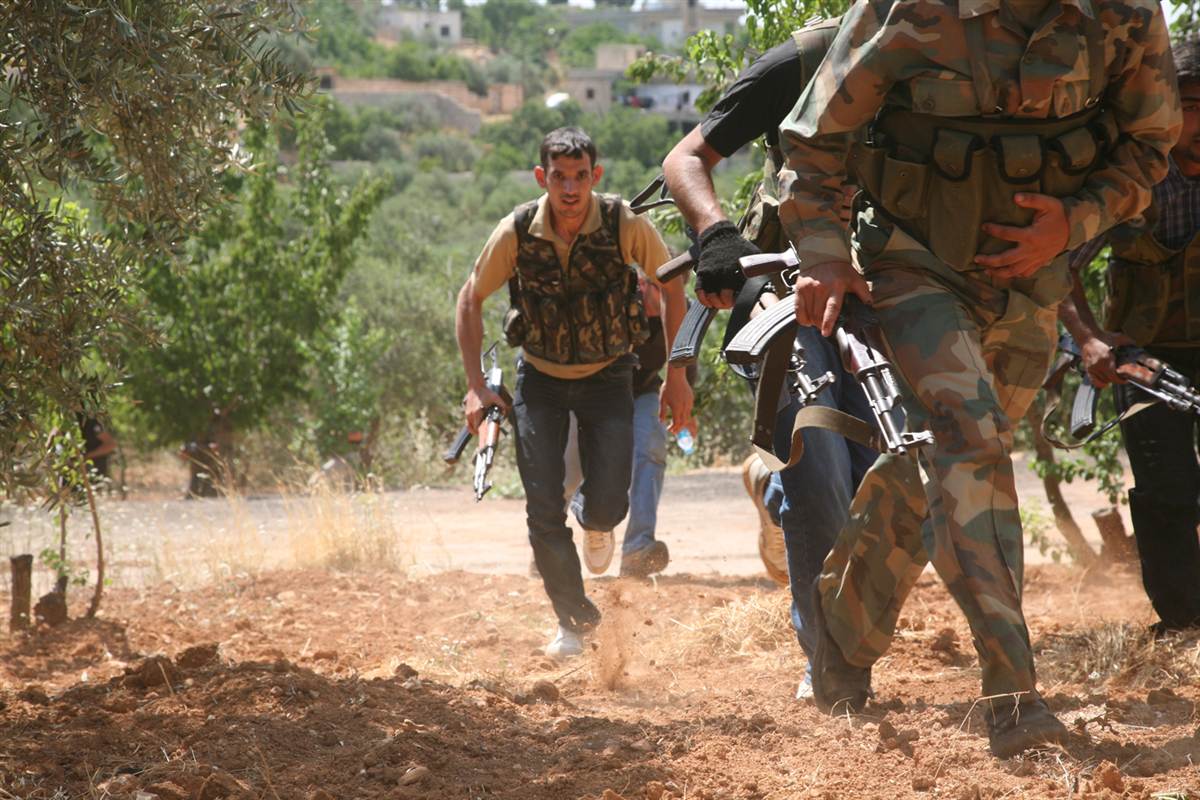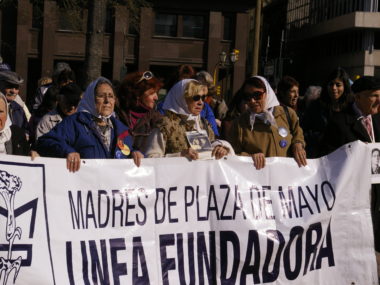
Fourteen years ago I began a journey to understand the political violence that took place in Rwanda during the year of 1994. Toward this end, I brought with me the skills that I had at that time: 1) an interest in media as well as government-generated data and content analysis, 2) an approach that was pooled at the nation-year, cross-sectional and time series in nature, and 3) an interest in state repression/human rights violation. All of this would change when confronted with Rwanda. Indeed, after full immersion into the case (from about 2000-2004, as well as reflection over the next ten years), I moved from being mostly interested in media and government sources to being mostly interested in human rights NGOs; I became more interested in the variation within countries than between them; and,I was no longer just interested in state repression/human rights violation but essentially every form of political violence.
Rwanda has this type of effect on you.
At the beginning, my framing of the topic was pretty standard. I initially just focused on the violence of the genocide. I was sent to Rwanda on the heels of a USAID project to assist the Centre for Conflict Management at the National University of Rwanda to redevelop and train some mémoire students on research methods. This is all that the students and the members of the Center wanted to talk about, and all that I could find to read about Rwanda at the time. This is mostly what was talked about in the US – that we had failed to intervene and stop it. Once there, I began to hear about other things: the civil war (1990-1994) and the Rwandan Patriotic Front (RPF) victory (1994) as well as the end/termination of the genocide and civil war (1994). With this in mind, I began to expand my reading but this was 2000 and there was not a tremendous amount of rigorous work at the time. The rigorous work on state repression was less than ten years old at that time and the work on civil war was a little bit older than that.
What changed many things for me was a meeting with diverse human rights organizations (e.g., Liprodhor) held in the US embassy. During this meeting, it was expected that I would teach the organizations something about rigorous human rights measurement and what researchers were doing in the US. Although interested in these topics, I ended up learning more from the human rights organizations. For example, they were already collecting information on violent behavior (by type), across space and time. Indeed, there were quite a number of efforts being undertaken. They actually had not interacted with each other much nor did they think about collaborating with one another. I started to pull together meetings all over the country toward this end.
Mostly these efforts failed but they did reveal a tremendous amount of information. What was interesting to me was that without the categories that guided/limited political violence scholars, they identified all types of activities. We did not find armed conflict scholars studying armed conflict ignoring everything else; we did not find human rights violation scholars studying human rights violations ignoring everything else; we did not find genocide scholars studying genocide ignoring everything else; we did not find militia violence scholars studying militia violence ignoring everything else. Nope. We just found organizations collecting information on deaths, beatings, harassment, shootings, explosions and anything that would harm people.
With this in mind, my timeline for relevant events expanded. From the limited number of activities above, I began to look at the state repression prior to 1989, interstate war (1990-1993), the RPF occupation of part of Rwanda (1993), democratization (1994), intrastate/civil war (1994), genocide (1994), the RPF victory (1994), the end of the war and genocide (1994), post-war/genocide domestic pacification (1994-present), the invasion of Congo (1996-1997), the occupation of Congo (1997), the re-invasion of Congo (1998-2003), targeted assassination of RPF opponents abroad (1998-present), the systematic return of political opponents to Rwanda (1998-present) and Rwandan economic development (1999-present). This was no simple reading list and the sheer range of topics exceeded the parameters of any one type of political conflict/violence, which has been the standard way to study the topic. Indeed, this revealed that what was necessary to understand violence in Rwanda was nothing less than the whole field of conflict studies/contentious politics itself. Needless to say, this involved a bit more reading than I was ready for but what the hell. Like it was said in the film Apocalypse Now: “What else was I going to do”.

With the myriad forms of political violence involved, the number of explanatory factors and theoretical approaches began to expand. Much of the rigorous work has focused on political factors (democratization), economic factors (poverty and greed), social factors (networks) and psychological factors (e.g., fear, anger and a desire for homeland) – mostly on an individual basis. Research was further divided by methodological orientation. Some did interviews (with genocidaires, victims, survivors), some did focus groups (with the same), some did surveys, some did censuses, some did NGO data compilation of eyewitness records, some used government records/compilations. Most focused on the official Rwandan government forces but some focused on government-affiliated militias and Hutu mass population, whereas a select few focused on the Rwandan Patriotic Front (the invaders/rebels).
Outputs varied: some created popular books (like We Wish to Inform You That Tomorrow…), some created journalistic articles, some created academic articles, some created films. Again, few looked across explanations, methods, perpetrators and venues. This was hard to do as each combination yielded some new insight. For example, focused on democratization, anger, interviews, the Rwandan government as told within books, one would be led to one constellation of insights. Focused on poverty, surveys, the RPF and articles, one would be led to another. You can imagine the other combinations and, let me tell you, they are there.
From reading this material, one becomes disenchanted with how social science approaches the topic. Everyone honchos their own theory, their own mechanism, their own data, their own perpetrators, their own anecdotes. It doesn’t really add up to much, in the final analysis. Economist reviewers rarely mention the anthropological work, political science reviewers rarely mention the criminological work, legal scholars rarely mention the psychological work, and so forth. As long as one stays with one’s own, they can get their work into print and the accumulation of collective wisdom remains elusive.
I for one began to find the work of demographers and psychologists (e.g., discussions of xenophobia) especially useful in examining Rwanda. This came from an increasingly awareness of just how many people were on the move. By conservative estimates approximately one half to two-thirds of the Rwandan population had moved at least some distance during the violence between 1990-1994. If this was the case, however, then why would the political or economic context at the beginning of the 1990 or 1994 matter for how the interstate/civil war and/or genocide took place? If this many people were on the move, then how would ethnic identification matter – especially if people might not have kept their IDs with them? Might it not be the case that individuals were killed because they were not known as opposed to because they were? Were most individuals killed where they were from or where they ran to? Where did all the piles of ID cards go? With the one forensic study undertaken by Physicians for Human Rights (that you can no longer find online by the way), they found only a handful of IDs along with a few hundred bodies. What does that mean?
I also find the work of criminology useful. For example, a different line of issues emerges concerning how people were killed. If one reads popular literature and journalistic accounts, it seems that the average killing was neighbor upon neighbor, family member upon family member and with machetes. If this is true, however, then there was an awful lot of killing being done by an extremely large number of people and almost non-stop. If this is true, then Rwanda contains within it several hundred thousand killers (or more) which if criminalized would effectively turn the nation into a police state. Is this physically possible? Is it the case that there are that many murderers running around the country and sitting in jail? Or, is it possible that people were killed 11,000 or 30,000 at a time because weapons were used like rifles, machine guns and munitions by trained military units? Or, is it possible that some were killed via machetes and some were killed via weapons? If this is the case, then there was a smaller number of killers involved and the whole society need not be treated as criminals? The differences between the different scenarios are important for this illuminates the causal explanations involved as well as provides some insight into what should be done following the conflict.
The issues above are useful to consider because confined to any one field of study, any one type of data and any one approach, researchers will be hindered in their seeking answers, which has largely been the case.
Even the questions are hindered by fields as political scientists examine the number of dead bodies, state-building, the number of women in office and/or (to a lesser degree) human rights violations and what preferences find their way into policy; economists examine investment, growth, income and/or (to a lesser degree) ownership; psychologists examine trauma, stress, happiness and reconciliation; legal scholars examine gacaca, punishment and the international legal process; and so forth. We study each of these topics as though they were unrelated to one another.
Rather than continue old practices, however, I would argue that conflicts like that in Rwanda call out for new practices. To understand Rwanda 1994 and afterward, one clearly has to disaggregate data by space, time, actor and action. This is the only way to figure out who did what to whom, where and why – acknowledging that precisely what one was talking about varied across dimensions. Genocide did not engulf all of Rwanda at all points in time, in the same way. Neither did the interstate war, civil war, sexual violence or random violence for that matter. To lump them all together or ignore some while highlighting others (which has been our practice until the current period) is not going to improve our understanding of what transpired then or what could happen later. Rather, it will hinder it.
What is called for at the 20th anniversary of Rwandan violence is a global interdisciplinary collaborative effort, putting forth all of our data on the table as if it were on one webpage. Of course there has been no official call. This is an unofficial official call. We as scholars of conflict and violence do not need to wait for an invitation. Like the promise offered by the Atrocity Prevention Board in the United States that should serve as a coordinating body between all scholars on the topic, we can create our own effort. I advocate keeping it more unofficial than official. As the current Rwandan government has a mixed record with regard to data release and distribution (indeed many of the human rights records that I acquired during my research are no longer publicly available except on my webpage for the project to be released with updated information later this week), it is wise if some more neutral location were to house the data (e.g., dataverse, the ICPSR or some other unit). With such a depository and the unification of data from different fields as well as the conversation that would ensue across fields, we can dramatically improve our insights into what happened. With such a depository, researchers could begin to ask questions that before would be unimaginable. With such a depository, researchers could begin to answer questions that before would be unanswerable. To address the magnitude and complexity of the horror that was Rwanda 1994 we essentially need a research effort that is equally massive and complex. Truth and respect demand such an effort. Decent social science demands it as well.








3 comments